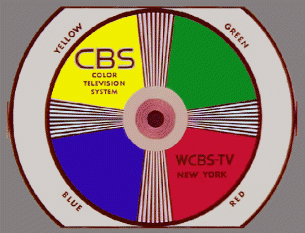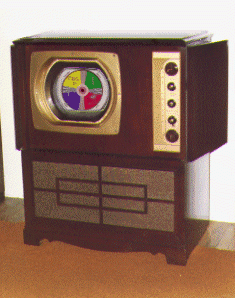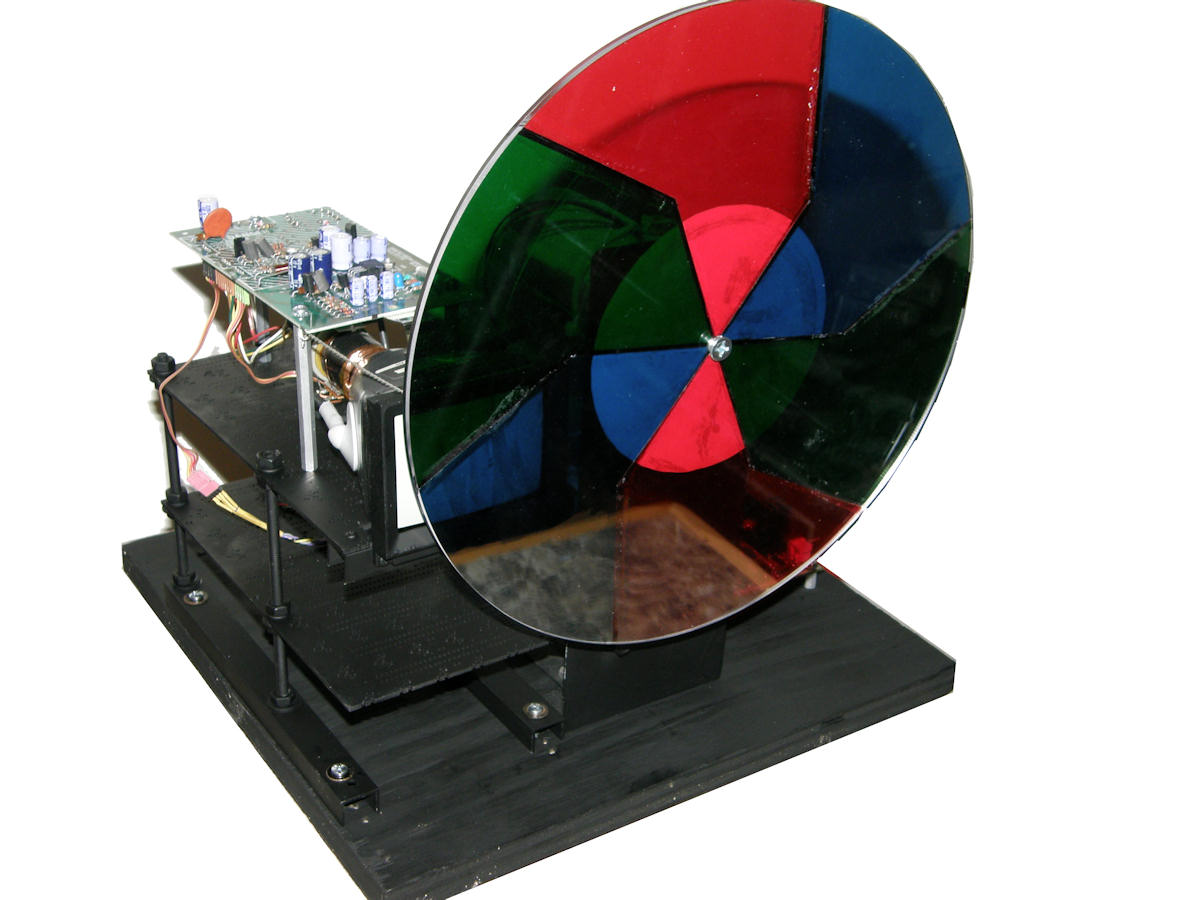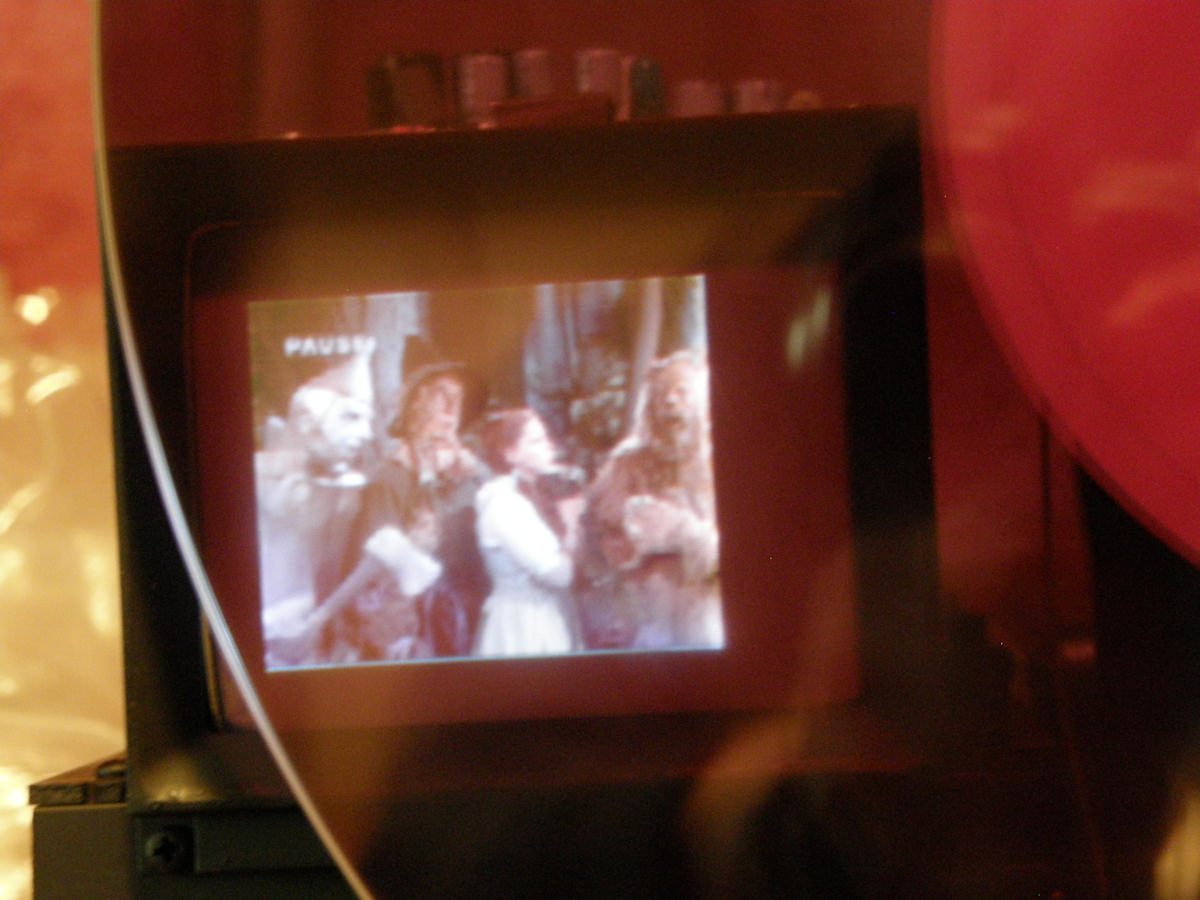|
LabGuy's World: Goldmark 1 - A Field Sequential Color TV Project
PART ONE: How can we acheive color television in the most difficult way possibe? Let's find out! 
What we might have seen on TV in the New York area in 1950! (Click the test pattern to read Ed Reitan Jr.'s History of Color Television, the most detailed resource on the history of Color Television.) In 1948, Dr. Peter Goldmark of CBS developed a color television system that worked very well. But, it was not compatible with existing sets of the day. the RCA compatible color TV system was the ultimate winner of that contest. Consumers could enjoy the same programming on their TV sets regardless of whether the broadcast was in color or not. Labguy tackles the challenge of replicating a mechancial color wheel verison of an original Goldmark style television monitor. The system transmitted only one color per field, in the sequence of red, blue and green. This sequence produced the lowest perceived flicker. If the process were applied to the existing 525 line, 60 fields per second system of the day, the transmitted bandwidth would be increased to 18MHz per channel. That is three regular 6MHz TV channels! The answer lay in changing the line and field rate of the CBS system so it could fit into a standard 6MHz TV channel. This resulted in a system that ran 405 lines at 144 fields per second. Without going through the math, this worked out to a 24 frame per second system with a 6:1 color field interlace. This means it takes six complete fields to create one complete color frame of video. The system's downfall lay in several factors. The Goldmark system was incompatible with the existing TV system. The Goldmark method was mechanical, though not locked into this. The sets were very large relative to the available screen size. The color wheel was always twice as wide as the CRT screen. Last, the RCA system offered compatibilty between color and B&W sets. 
A typical 1950 CBS color television - Not many were made then More have probably been built by hobbiests and experimentors since then and in various other forms. (Most of its history, the original CBS field sequential television signal was not available to the average person.) Several hundred CBS compatible sets were manufactured in the early fifties.The total number of sets in the New York City area was no more than a few dozen at best. Everyone else saw out of sync video on their EIA standard B&W television sets. They could probably hear the sound and no doubt everyone was bragging up the colors in the CBS broadcasts! 


The Goldmark 1 - CBS field sequential color television monitor This is my solution to the CBS color television problem. Using a surplus three inch CRT B&W video monitor and a twelve inch plastic color filter wheel, this set took me less than one year to build. The CRT is scanning 144 fields per second. Each field is one complete image of either red, blue and green. As each field scans down the screen, the color wheel places the correct filter in front of the tube. After six fields have scanned, and the wheel has made one complete rotation, a complete color frame has been formed. The color frame rate is 24 frames per second, same as film. The wheel is spinning in perfect time to the video color frame period and is turning 24 times per second, which is 1,440 RPM. The following article pages will walk you through the development of the project through to the conclusion. Enjoy! [HOME] [BACK TO ELECTRONICS PROJECTS] [NEXT: GETTING STARTED] Created: July 3, 2013, Last updated: February 24, 2014 |